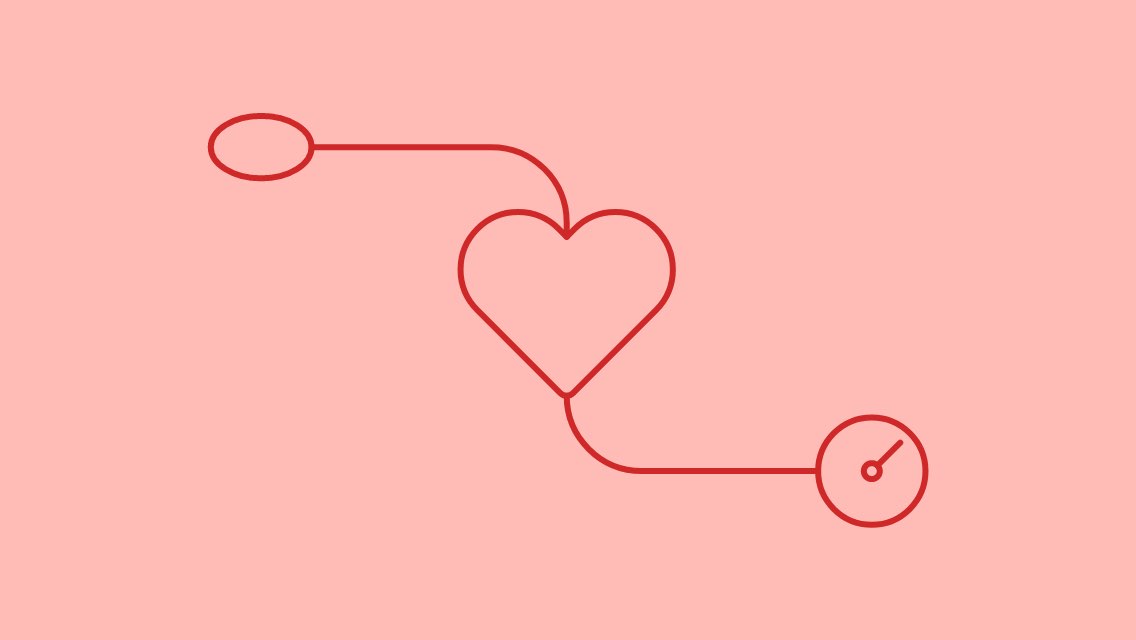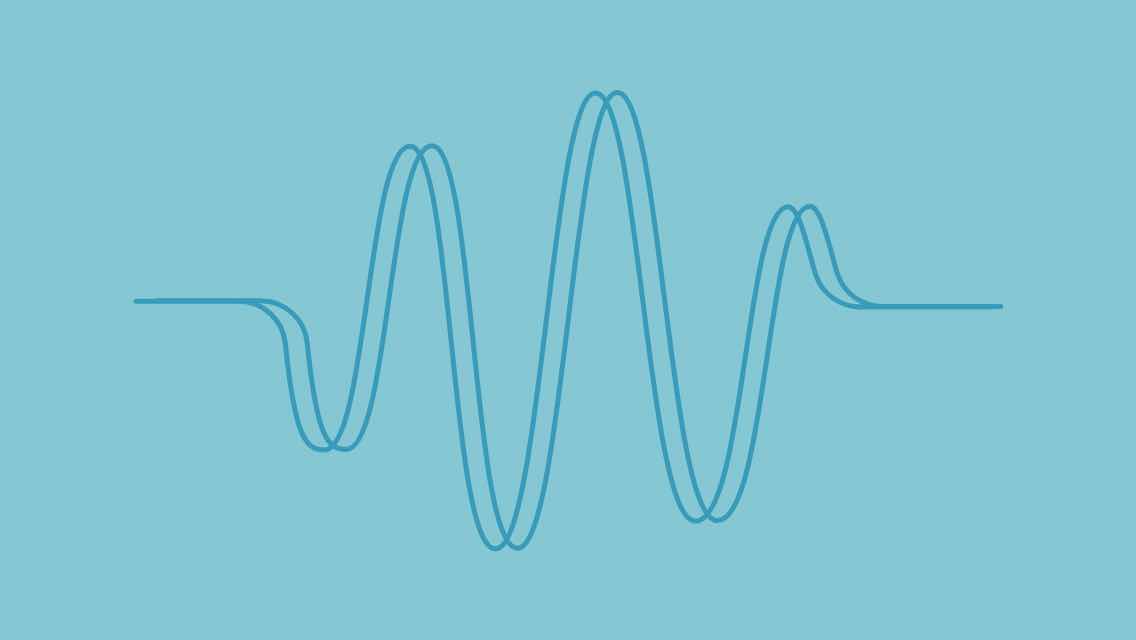One-third of American adults have blood pressure that exceeds 130/80mm Hg, the recommended upper limit that the American College of Cardiology and American Heart Association recommend for minimizing the risk of hypertension. Fewer than half of these people have their high blood pressure under control, according to the Centers for Disease Control and Prevention.
Uncontrolled hypertension, as treatable as it is, can lead to numerous serious health consequences. As this CDC infographic (below) illustrates, those with untreated high blood pressure (above 130/80mm Hg) are four times more likely to die from stroke and three times more likely to die from heart disease.

Blood pressure is a critical measure of health and reveals how much pressure is being placed on the walls of our blood vessels. It’s expressed in millimeters of mercury (mm Hg) for both systolic (when the heart is contracting to force blood flow through arteries) and diastolic (when the heart is relaxed and blood re-filling its chambers for the next beat).
Chronically elevated blood pressure is known as a “silent killer” because it wreaks havoc on our bodies, often without showing obvious symptoms. Even with heightened public awareness around blood pressure, misunderstandings are pervasive and can discourage us from seeking the full evaluation and medical support we may need to monitor and manage this essential health indicator.
These are six of the most common misconceptions about blood pressure — and what you can do to proactively manage it in partnership with your healthcare provider.
- Misconception 1: The standard method for measurement tells you all you need to know.
- Misconception 2: The lower your blood pressure, the better.
- Misconception 3: The individual numbers don’t mean much on their own.
- Misconception 4: Sodium causes blood pressure to rise.
- Misconception 5: Higher insulin and high blood pressure are not related.
- Misconception 6: Medications are enough to manage high blood pressure.
Misconception 1: The standard method for measurement tells you all you need to know.
It’s commonly understood that standard, seated blood pressure at or near 120/80mm Hg is safest for overall health. However, the dynamic changes in blood pressure we see in response to positional changes — think from standing to sitting, or vice versa — can provide clues about the body’s readiness to respond to stress.
Ideally, blood pressure is supposed to increase slightly upon sitting up from a laying position, as well as from sitting to standing. This keeps blood flowing sufficiently upward as it works against gravity to reach the brain.
If blood pressure doesn’t rise slightly and you feel a bit dizzy or light-headed upon standing, it may indicate low blood volume or even more concerning issues such as diminished adrenal health or nervous system imbalance (parasympathetic vs. sympathetic balance).
Bottom Line: Don’t just assess your overall blood pressure reading and assume stellar internal health. Maintaining healthy lifestyle habits — adopting a more wholesome, unprocessed diet; getting adequate sleep; managing stress; and exercising regularly, if your doctor clears you to exercise — can all contribute to optimal health.
Misconception 2: The lower your blood pressure, the better.
While many people clearly understand the dangers associated with chronically elevated blood pressure (hypertension), we may be wrong to assume lower blood pressure (hypotension) is automatically a sign of good health.
The American Heart Association notes that “low” blood pressure is not typically something you need to worry about unless it’s also accompanied by symptoms like dizziness, fainting, mental distractibility, fatigue, or depression (among others). In such cases, it’s important to visit your physician to assemble a clearer understanding of your health. It could be as simple as dehydration-related low blood volume or as serious as heart arrhythmias, but only your healthcare provider can help you be sure.
In truth, there are concerns with hypotension, such as low thyroid function, which can cause dizziness, falls, and diminished cognitive health. There’s not, however, a clear clinical definition of what number actually constitutes “low” pressure. The definition of hypotension is based more on an individual’s case, which is why it’s important to monitor regularly over time.
Bottom Line: Don’t assume you’re in great health if your blood pressure is always low. Investigate it — especially if you don’t feel great. Schedule a consult with your healthcare provider to rule out any serious conditions.
Misconception 3: The individual numbers don’t mean much on their own.
Although this is a complicated medical question, systolic and diastolic blood pressures may each predict risks of different vascular diseases.
Some research suggests that elevated systolic blood pressure (the higher, top number) is a better predictor of bleeding incidents in the head (intracerebral hemorrhage or subarachnoid hemorrhage), while elevated diastolic pressure (the lower, bottom number) is more indicative of abdominal aortic aneurysm risk.
Bottom Line: Monitoring your numbers with these considerations in mind help your physician assess your health status, especially if you’re at risk for either of these types of conditions. It’s important to get regular checkups and understand your blood pressure numbers because there often aren’t obvious signs or symptoms that show up until it’s too late.
Misconception 4: Sodium causes blood pressure to rise.
Adequate dietary sodium is necessary to maintain good health — after all, it’s a major component of our extracellular fluid (fluid outside of our cells), especially blood volume. It’s also a major reason our nervous system can conduct basic signals.
Most of our dietary sodium comes in the form of salt, which is a combination of sodium and chloride. The chloride is as vitally important as the sodium because it’s used in the production of hydrochloric acid, which allows us to digest food and kills many of the pathogens we eat. It’s also required to make other signaling hormones such as cortisol.
A lack of sodium and salt can lead to brain swelling, coma, neuromuscular deficiencies, congestive heart failure, and impaired stress response. While these may seem like extreme possibilities, sodium restriction in the context of regular exercise and frequent sweating can certainly become problematic for many.
Yet despite the body’s innate need for sodium, there is still much debate about how much we need for optimal health. The Institute of Medicine recommends “healthy” sedentary adults consume 1,500 mg of sodium per day to replace amounts typically lost through sweat and urination. At the same time, the USDA urges people to cap their salt intake at 2,300 mg (1 teaspoon). Meanwhile, the American Heart Association pushes for a stricter ceiling of less than 1,500 mg per day.
Interestingly, the human body shifts into sodium-sparing mode (which means the kidneys begin re-absorbing or conserving the essential nutrient sodium) when dietary sodium intake dips below 1.5 teaspoons (about 3,300 mg) per day.
Why the differences and demonization of a substance so important to biological function?
Reducing sodium intake from the typical American levels of about 3,300 mg per day to between 1,500 and 2,300 mg has been shown to demonstrate modest reductions in blood pressure and is the main aim of the DASH (Dietary Approaches to Stop Hypertension) diet. However, the blood-pressure effects of a low-sodium dietary plan are not easy to pin on the sodium reduction alone.
Advising an entire population to restrict sodium may come with some risks, too. In one study, researchers found salt restriction led to poor outcomes and higher risk of premature death in those with type 2 diabetes; in another study, researchers observed immediate onset of insulin resistance (a precursor to diabetes), while noting an increased risk of falls in the elderly on low-salt diets.
Our bodies don’t just regulate sodium levels in isolation from other nutrients.
In fact, we aim to maintain a very tight balance between sodium and potassium. Healthy kidneys can accommodate a rather wide range of sodium and potassium intake levels.
The DASH diet — a several-time reigning champion of the U.S. News & World Report diet face-off — all but banishes processed food (and, with it, refined grains, salt, sugar, and chemically altered fats) in favor of potassium-rich veggies, cold-pressed fats, and lean proteins and ends up being lower in total carbohydrates. This dietary shift has also been shown to result in blood-pressure benefits.
Increasing potassium intake by eating more colorful veggies and some fruit is a major but secondary aim of the DASH diet. The boost in potassium has also been shown to have a dose-dependent effect on countering the unfavorable effects of excess sodium intake.
Bottom Line: If you’re moving away from processed foods and toward more colorful veggies, you may not have to consciously restrict sodium. In fact, you may be able to add some to your diet. Monitor your blood-pressure levels throughout this dietary change and let you doctor know about the choices you’re making, particularly if high blood pressure has been an issue in the past.
Misconception 5: Higher insulin and high blood pressure are not related.
Higher blood pressures are often associated with being overweight or obese, but it’s the classic chicken-before-the-egg conundrum: Is the extra weight causing the increased blood pressure, or does blood pressure rise along with whatever is causing the weight gain?
The effect of obesity or excess body weight on blood pressure seems to be mediated by insulin sensitivity and/or circulating levels of insulin. In other words, higher insulin levels seem to raise blood pressure before clinical insulin resistance is discovered.
According to many researchers, elevated insulin may play a major role in increasing blood pressure and be the main driving association between excess weight and hypertension. Even in young adults, higher levels of fasting insulin are strongly associated with unfavorable cardiovascular disease risk factors including elevations in blood pressure.
Additionally, sodium and water retention are heavily influenced by sodium-potassium balance and total insulin load. When insulin levels are high and potassium intake is low (as it often is with the typical high-carbohydrate and low-activity American lifestyle), the kidneys tend to retain sodium and water. Under these circumstances, the kidneys have a tough time shedding extra fluid and sodium, leading to higher blood pressure.
Interestingly, when subjects replace some starchy food with sources of monounsaturated fat (such as avocados or olive products) or protein — thus reducing total insulin demand — many cardiovascular-disease indicators improve more than they do for those following standard dietary advice.
Bottom Line: If you have blood-pressure issues and you have yet to assess fasting insulin and glucose tolerance, ask your doctor to check fasting insulin or c-peptide and hemoglobin A1c (HbA1c) with your fasting glucose the next time you get labs drawn. These labs will give you a more complete picture of your insulin sensitivity and glucose management.
Misconception 6: Medications are enough to manage high blood pressure.
The latest blood-pressure treatment guidelines offer information ranging from lifestyle interventions to extensive drug considerations for special populations. The former have been found to lead to significant improvements in blood pressure, among other health indicators, when we stick with them. These factors include the following:
- Losing weight (using the DASH guidelines)
- Limiting alcohol to one standard serving or less per day
- Reducing sodium intake
- Getting adequate dietary potassium, calcium, and magnesium (not as easy as it sounds even with apparently great nutrition habits)
- Abstaining from using nicotine
- Exercising at least 30 minutes most days is often enough to improve the body’s own ability to more safely manage blood pressure
- Consuming dark chocolate, in the short term, may also be a suitable non-drug strategy, oddly enough
A current challenge with these non-pharmacological (a.k.a. lifestyle) recommendations is that Americans tend to struggle at complying with them. When applied faithfully, however, we can significantly lower our chances of needing to proceed to the next step.
The second-line treatment for elevated blood pressure is pharmacologic therapy, which is often necessary to mitigate acute threats of high blood pressure (e.g. stroke, heart attack, and aneurysms, to name a few).
The specific drug class or combination prescribed depends heavily on other risk factors in each individual; these include obesity, insulin resistance, kidney disease, or dyslipidemia.
Pharmaceutical drugs are known to deplete certain nutrients from our bodies and often come with side effects that need to be considered carefully for each case. For example, an editorial in the Journal of Clinical Endocrinology and Metabolism outlines concerns that using thiazide drugs or beta blockers may increase the risk of type 2 diabetes. As a result, experts suggest those with insulin resistance/pre-diabetes risk profiles avoid these drug classes. (At very least, the clinician should monitor both glucose levels and insulin levels in such subjects.)
ACE inhibitors are shown to increase sodium and zinc losses. Beta-blockers disrupt coenzyme Q10 (CoQ10) status and may affect melatonin, while calcium channel blockers deplete phosphorus and potassium.
Finally, various diuretics increase losses of calcium, magnesium, potassium, vitamins B1, B6, and C, sodium, zinc, folate, and CoQ10. Magnesium itself acts as a calcium-channel blocker, which effectively helps blood vessels relax, helping to lower blood pressure.
These nutrient-depleting effects of common disease-management tactics reinforce the need for adequate micronutrient intake, which we recommend with our Foundational Five supplement approach, especially for those who consistently eat too much processed food and not enough wholesome produce, protein, and omega-3 fats. Magnesium supplementation alone has been shown to be a very cost-effective measure for improving blood vessel health in unhealthy, overweight, and insulin-resistant individuals.
As you can see, it’s more than worthwhile to commit to the first-line recommended steps before embarking on a pharmacological route with its inevitable and often significant side effects. Living a healthy lifestyle can be an effective course of action — with benefits that extend well beyond improved blood pressure.
References
[ii] Frank M. Sacks, M.D., Laura P. Svetkey, M.D., William M. Vollmer, Ph.D., Lawrence J. Appel, M.D., George A. Bray, M.D., David Harsha, Ph.D., Eva Obarzanek, Ph.D., Paul R. Conlin, M.D., Edgar R. Miller, M.D., Ph.D., Denise G. Simons-Morton, M.D., Ph.D., Njeri Karanja, Ph.D., Pao-Hwa Lin, Ph.D., Mikel Aickin, Ph.D., Marlene M. Most-Windhauser, Ph.D., Thomas J. Moore, M.D., Michael A. Proschan, Ph.D., and Jeffrey A. Cutler, M.D. “Effects on Blood Pressure of Reduced Dietary Sodium and the Dietary Approaches to Stop Hypertension (DASH) Diet,” N Engl J Med 2001; 344:3-10.
[iii] Elif Ekinci, Sophie Clarke, Merlin C. Thomas, John L. Moran, Karey Cheong, Richard J. Maclsaac, and George Jerums. “Dietary Salt Intake and Mortality in Patients With Type 2 Diabetes,” Diabetes Care, March 2011; 34:3 703-709; published ahead of print February 2, 2011.
[iv] Rajesh Garg, Gordon H. Williams, Shelley Hurwitz, Nancy J. Brown, Paul N. Hopkins, Gail K. Adler. “Low-salt diet increases insulin resistance in healthy subjects,” Metabolism: Clinical and Experimental, July 2011; 60;7, 965-968.
[v] Renneboog B., Musch W., Vandemergel X, Manto MU, and Decaux G. “Mild chronic hyponatremia is associated with falls, unsteadiness, and attention deficits,” Am J Med, 2006 Jan; 119(1): 71.
[vi] Appel L.J., Sacks F.M., Carey V.J., Obarzanek E., Swain J.F., Miler ER 3rd, Conlin P.R., Erlinger T.P., Rosner B.A., Laranjo N.M., Charleston J., McCarron P., Bishop L.M. “Effects of protein, monounsaturated fat, and carbohydrate intake on blood pressure and serum lipids: results of the OmniHeart randomized trial,” JAMA, 2005 Nov 16; 294 (19): 2455-64.
[vii] Haffner, S. M. Insulin and blood pressure: fact or fantasy? The Journal of Endocrinology and Metabolism, 2013: 76;3.
[viii] C.P. Lucas, J.A. Estigarribia, L.L. Darga, G.M. Reaven, “Insulin and blood pressure in obesity.” Hypertension. 1985; 7: 702-706.
[ix] Jiang X, Srinivasan SR, Bao W, Berenson GS. Association of Fasting Insulin With Blood Pressure in Young Individuals: The Bogalusa Heart Study. Arch Intern Med. 1993;153(3):323-328.
[x] Appel LJ, Sacks FM, Carey VJ, et al. Effects of Protein, Monounsaturated Fat, and Carbohydrate Intake on Blood Pressure and Serum Lipids: Results of the OmniHeart Randomized Trial. JAMA. 2005;294(19):2455-2464.
[xi] Appel LJ et al. (2005) Effects of protein, monounsaturated fat, and carbohydrate intake on blood pressure and serum lipids: results of the OmniHeart randomized trial. JAMA 294: 2455–2464.
[xii] Davide Grassi, Cristina Lippi, Stefano Necozione, Giovambattista Desideri, and Claudio Ferri, “Short-term administration of dark chocolate is followed by a significant increase in insulin sensitivity and a decrease in blood pressure in healthy persons,” Am J Clin Nutr. March 2005:81 (3), 611-614.
Marques, B.C.A.A., Klein, M.R.S.T., da Cunha, M.R. et al. Effects of Oral Magnesium Supplementation on Vascular Function: A Systematic Review and Meta-analysis of Randomized Controlled Trials. High Blood Press Cardiovasc Prev 27, 19–28 (2020). https://doi.org/10.1007/s40292-019-00355-z


